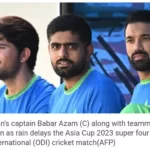In a groundbreaking development at the highest echelons of India’s judicial system, the Supreme Court recently bore witness to a historic moment as it heard a case presented by a lawyer who is both deaf and mute. This unprecedented occurrence was made possible through the use of an interpreter proficient in sign language.
Initially, the control room overseeing virtual proceedings had, regrettably, declined to allocate screen space to the remarkable lawyer, Sara Sunny. However, the tide turned when her interpreter, the skilled Saurabh Roy Choudhary, made his appearance on the screen at the designated time. Choudhary, deftly translating Ms. Sunny’s sign language, commenced presenting their arguments before none other than Chief Justice of India, DY Chandrachud.
In a swift and commendable move, Chief Justice Chandrachud, a proponent of equitable access to justice, intervened. He directed both the control room and the interpreter to provide screen space to Ms. Sunny. Consequently, both Ms. Sunny and her interpreter were displayed on the screen, enabling them to effectively articulate their case before the hallowed halls of the Supreme Court.
Advocate-on-record Sanchita Ann played a pivotal role in orchestrating Ms. Sunny’s appearance before the Supreme Court, further emphasizing the importance of this milestone in the pursuit of inclusivity and accessibility within India’s legal system.
Chief Justice Chandrachud’s commitment to the cause of inclusivity is underscored by his decision last year to order a comprehensive accessibility audit of the Supreme Court complex. This initiative seeks to make the justice system more accessible while gaining insights into the challenges faced by differently-abled individuals when navigating the court’s procedures.
Notably, Chief Justice Chandrachud, as a symbol of personal commitment, is the adoptive father of two differently-abled girls. Earlier this year, he took the heartwarming step of introducing his daughters to the inner workings of the Supreme Court, providing them with a memorable tour of his workplace.
“The significance of this moment ties in with the challenges that remain on the path to true inclusivity and accessibility within the Indian legal system,” remarked Sanchita Ann, reflecting on the broader implications of this event. She also highlighted the active role played by the administration in promoting sign language accessibility.
In another stride toward inclusivity, the Supreme Court recently employed sign language interpreters for the first time during its two-day national stakeholders consultation on child protection. Furthermore, program details for this event were issued in Braille, facilitating the visually impaired in accessing the information. This annual event was organized by the Supreme Court Committee on Juvenile Justice and Child Welfare.
Chief Justice Chandrachud’s commitment to understanding the hardships faced by differently-abled individuals led to the formation of a Supreme Court committee on accessibility last year. This committee annually conducts national stakeholder consultations, fostering collaboration with partners from the Women and Child Development Ministry, other government sectors, as well as national and state commissions dedicated to the protection of children’s rights.
In an era marked by progress and inclusivity, this momentous occasion within India’s legal realm symbolizes a significant stride toward ensuring that the doors of justice remain open to all, regardless of their physical abilities or limitations.







